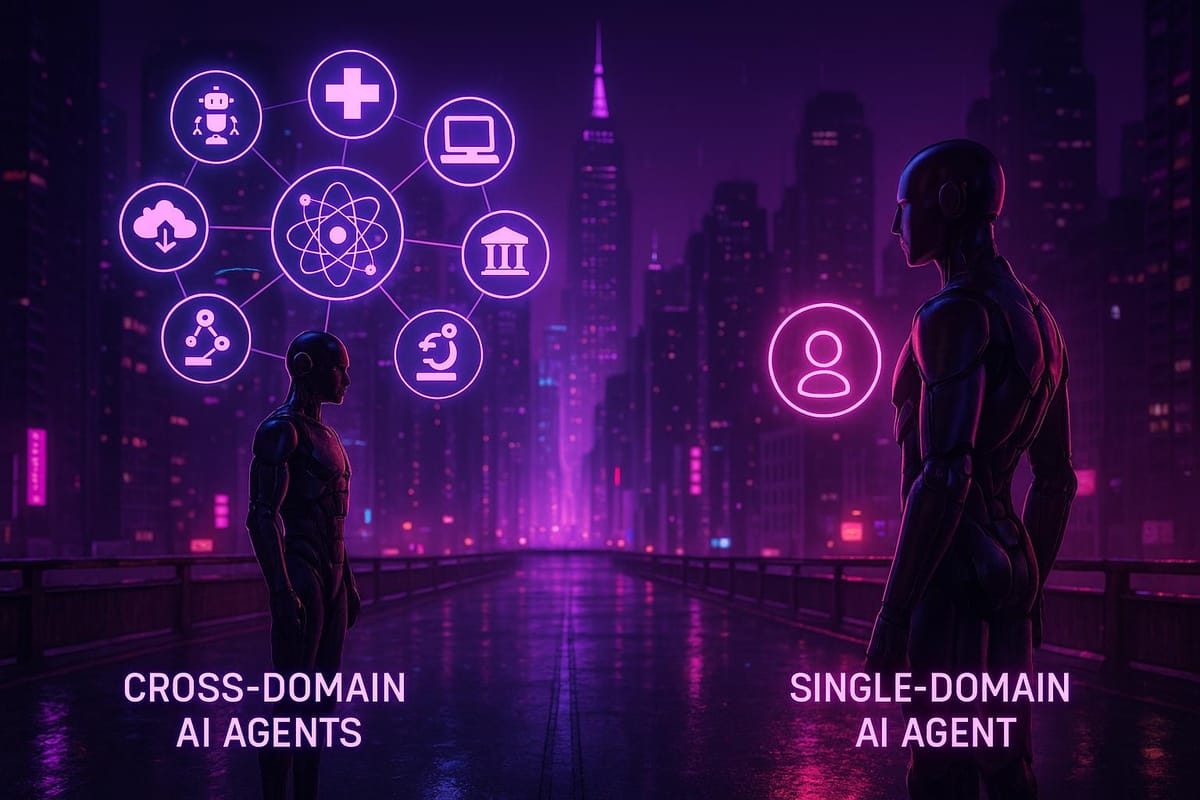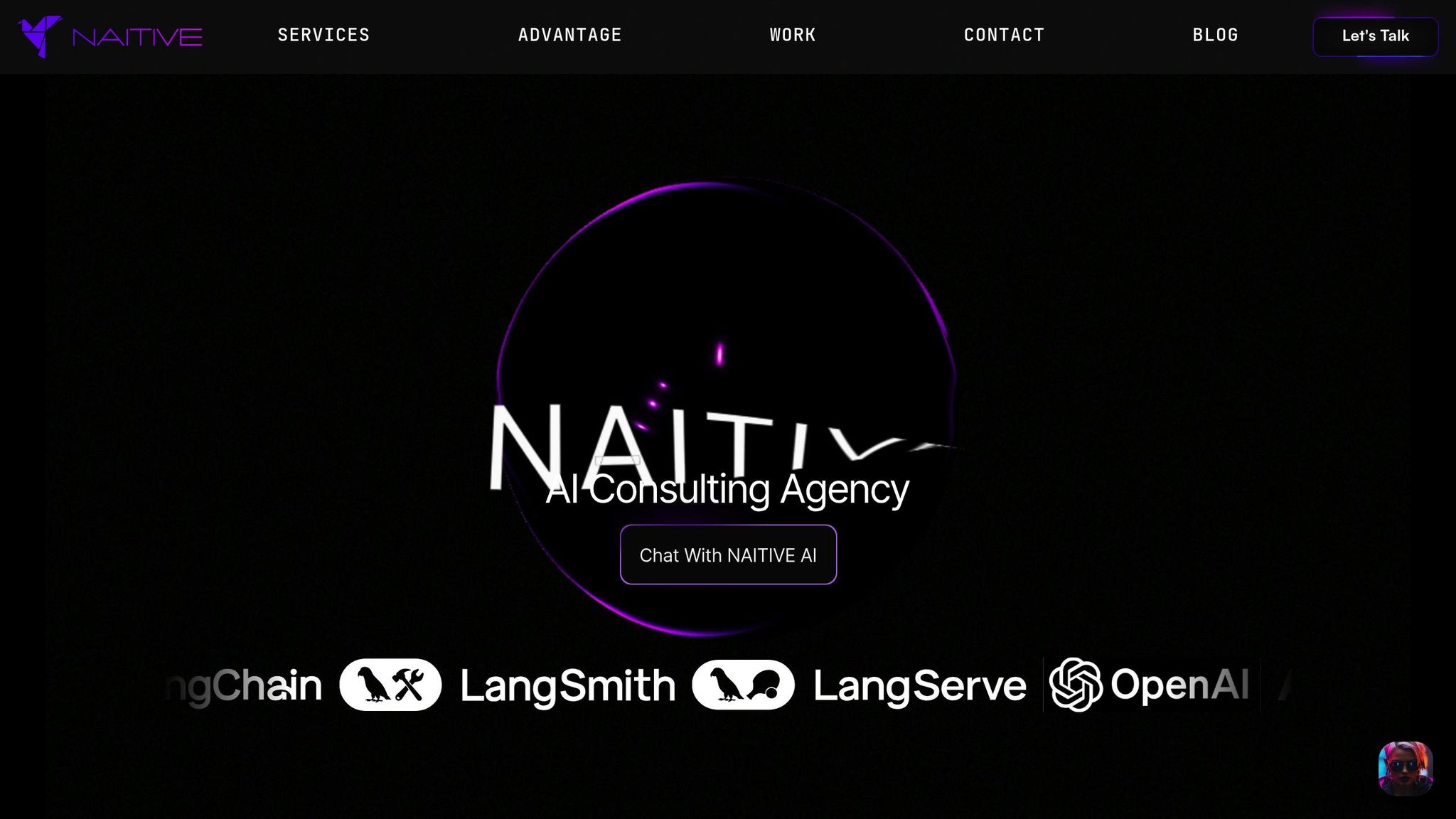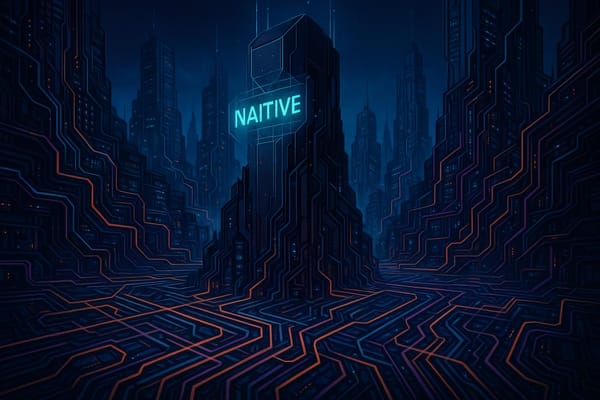Cross-Domain AI Agents vs. Single-Domain Agents
Explore the differences between cross-domain and single-domain AI agents to find the best fit for your business automation needs.

Cross-domain and single-domain AI agents serve different purposes in business automation. Cross-domain agents handle multiple functions across departments, offering scalability and coordination, while single-domain agents focus on specific tasks with precision and efficiency. Choosing the right type depends on your business needs, complexity, and long-term goals.
Key Takeaways:
- Cross-Domain Agents: Best for managing complex, interconnected workflows (e.g., smart city traffic, warehouse automation). They require more resources and expertise but scale well with business growth.
- Single-Domain Agents: Ideal for specialized, well-defined tasks (e.g., chatbots, quality control). Easier and faster to deploy but limited in scope and scalability.
Quick Comparison:
| Aspect | Cross-Domain Agents | Single-Domain Agents |
|---|---|---|
| Development Complexity | High – Requires coordination | Low – Simple to implement |
| Deployment Speed | Slower – Needs extensive planning | Faster – Quick to launch |
| Scalability | High – Grows with business needs | Low – Limited, may need rebuilds |
| Task Accuracy | Good across domains | Excellent within specialization |
| Maintenance Cost | Higher – Complex troubleshooting | Lower – Simpler debugging |
| Failure Resilience | High – Fault tolerance | Low – Single point of failure |
Your choice depends on whether you need broad system integration or targeted task automation. Keep scalability, resource availability, and operational goals in mind when deciding.
AI Agents vs Traditional Software (What’s the Difference?)
Capabilities and Limitations Comparison
Understanding the differences between cross-domain and single-domain AI agents is essential for businesses looking to refine their automation strategies. Each type of agent has its own strengths and weaknesses, and knowing how these trade-offs align with operational needs can guide better decision-making. This comparison highlights which agent type is best suited for specific demands, offering insights into their advantages and challenges.
Cross-Domain Agent Strengths
Cross-domain AI agents shine when managing complex tasks that span multiple departments or systems. Their standout feature is the ability to maintain context while seamlessly switching between different functional areas, enabling smoother workflows that single-domain agents can't replicate.
Their modular design ensures fault tolerance, making them resilient in the face of localized failures - a critical feature for mission-critical operations.
Scalability is another significant advantage. As businesses grow, cross-domain agents can evolve by integrating new components or expanding existing ones without the need for a complete overhaul. This capability makes them a strong long-term investment for organizations planning for future growth.
Additionally, they excel in real-time adaptation, allowing them to respond dynamically to changing conditions and user feedback - an invaluable trait in fast-moving environments.
Single-Domain Agent Strengths
Single-domain agents are specialists, delivering exceptional performance in their specific areas of focus. Their targeted design enables deep optimization, resulting in faster responses and highly precise outputs.
These agents are also quicker and more cost-effective to deploy. With minimal infrastructure requirements and simplified troubleshooting, single-domain agents can be implemented rapidly to meet immediate needs without extensive planning or resources.
Their streamlined architecture eliminates the complexities of coordinating across systems, allowing them to focus entirely on optimizing performance within their designated scope.
Key Limitations of Each Type
Despite their strengths, both cross-domain and single-domain agents face notable limitations.
Cross-domain agents require substantial resources and expertise to implement. Coordinating multiple specialized components can overwhelm organizations that lack the necessary infrastructure or skilled teams. Ensuring smooth context sharing between these components adds another layer of complexity, as maintaining data integrity and seamless communication is technically demanding.
Observability is another challenge for cross-domain agents. As the number of interconnected agents grows, monitoring performance, tracking decisions, and pinpointing bottlenecks becomes increasingly difficult without advanced tools and expertise.
Single-domain agents, while easier to deploy, struggle with scalability. When business needs outgrow their original scope, they often require a complete rebuild. Their linear workflows also limit their effectiveness in complex environments. Tasks requiring coordination across multiple areas expose their inability to integrate cross-functionally. Additionally, if a single-domain agent encounters a problem it cannot resolve, the entire workflow may come to a halt, creating potential bottlenecks.
These challenges highlight the importance of aligning the choice of AI agent with the specific needs and goals of a business.
| Aspect | Cross-Domain Agents | Single-Domain Agents |
|---|---|---|
| Development Complexity | High – requires orchestration and coordination | Low – straightforward implementation |
| Deployment Speed | Slower – extensive planning required | Faster – quick to market |
| Maintenance Cost | Higher – complex troubleshooting | Lower – simpler debugging |
| Scalability | Excellent – scalable design | Limited – often requires rebuilds |
| Failure Resilience | High – fault tolerance built-in | Low – single point of failure |
| Task Accuracy | Good across domains | Excellent within specialization |
Use Cases and Applications Comparison
Building on the earlier discussion of strengths and limitations, let’s dive into how each type of AI agent performs in real-world scenarios. The choice between cross-domain and single-domain agents often depends on specific business needs and operational goals. Below, we’ll explore examples that highlight when one type might outperform the other, helping guide smarter AI investment decisions.
Side-by-Side Use Case Comparison
When you examine specific business scenarios, the differences between cross-domain and single-domain agents become crystal clear. Cross-domain agents thrive in environments requiring integration across multiple systems, while single-domain agents deliver outstanding results in highly focused, specialized tasks. The table below breaks down their performance across key business scenarios:
| Business Scenario | Cross-Domain Agents | Single-Domain Agents | Winner |
|---|---|---|---|
| Smart City Traffic Management | Manage intersections, traffic lights, and congestion across entire metropolitan areas. | Focus on isolated intersections or segments without city-wide coordination. | Cross-Domain |
| Warehouse Automation | Coordinate fleets of robots for shelf placement, sorting, and real-time inventory updates. | Optimize specific tasks but lack system-wide integration. | Cross-Domain |
| Hospital Patient Flow Management | Handle emergency triage, room allocation, and doctor assignments simultaneously. | Automate tasks within individual departments but lack holistic coordination. | Cross-Domain |
| Financial Trading & Fraud Detection | Execute trades based on market signals while monitoring transactions for anomalies across markets. | Specialize in either trade execution or fraud detection, but not both at once. | Cross-Domain |
Best Applications for Cross-Domain Agents
Cross-domain agents shine in scenarios where seamless coordination across multiple systems or departments is essential. These agents are particularly valuable in complex environments where workflows span organizational boundaries.
For example, in smart city traffic management, cross-domain agents synchronize traffic lights and manage congestion across entire metropolitan areas. Similarly, warehouse automation benefits from their ability to coordinate robots for tasks like shelf movement, sorting, and real-time inventory updates. Amazon’s use of AI-powered robots to streamline order preparation is a prime example of this capability.
In healthcare, hospital patient flow management is another area where cross-domain agents excel. By managing emergency triage, room assignments, and doctor scheduling all at once, they help reduce wait times and improve care during peak hours.
Cross-domain agents also play a critical role in financial trading and fraud detection, where they can simultaneously execute trades based on market signals and monitor transactions for potential fraud.
"The future of AI isn't about building artificial general intelligence in a single system – it's about building effective teams of specialized artificial intelligences." – Melanie Mitchell, AI Researcher
Best Applications for Single-Domain Agents
On the flip side, single-domain agents excel in environments that demand deep specialization and strict adherence to specific standards. These agents are ideal for tasks with well-defined processes and clear success metrics.
Take healthcare, for instance. Hippocratic AI's Polaris LLM architecture is designed specifically for medical applications, automating initial patient assessments and offering preliminary diagnoses. This targeted approach addresses workforce shortages while ensuring compliance with medical regulations.
In manufacturing, Landing AI’s Vision Agent is a standout example. It automates visual quality control with incredible precision, identifying production defects to reduce waste and improve efficiency. Similarly, regulatory compliance monitoring benefits from single-domain agents trained on industry-specific data, enabling them to navigate complex frameworks like SOX and GDPR with ease.
Ultimately, the choice between cross-domain and single-domain agents boils down to whether your organization prioritizes broad coordination or focused expertise. With Gartner forecasting that 33% of enterprise software will feature agentic AI by 2028 - up from just 1% in 2024 - understanding these distinctions is more important than ever for effective strategic planning.
Human-Agent Interaction Models
The way users interact with AI agents varies significantly between cross-domain and single-domain systems. These interaction models influence everything from user training needs to deployment complexity, making it essential to understand how each approach aligns with your organization's operations. This section expands on earlier technical discussions to examine user interactions and how these agents integrate into business processes.
How Cross-Domain Agents Interact with Users
Cross-domain agents act as advanced coordinators, bridging multiple departments and systems. When users engage with these systems, they are essentially working with an AI that connects various processes and functions. This interaction mirrors the complexity discussed earlier.
Take, for example, a system that uses a multi-agent architecture to link customer interactions with backend data processing. In such scenarios, users must frame their requests within a broader context. A typical query might be, "Show me inventory levels for our top-selling products and suggest reorder quantities based on current sales trends." The cross-domain agent handles this by coordinating between inventory management, sales analytics, and procurement systems.
However, this level of sophistication comes with challenges. Users often need additional training to effectively interact with these systems, and troubleshooting can be more complex since issues may span multiple functions. Research by Anthropic highlights this advantage, showing that multi-agent systems outperform standalone models by 90.2% in handling complex tasks.
How Single-Domain Agents Interact with Users
Single-domain agents, on the other hand, offer focused and predictable interactions within well-defined boundaries. Users know exactly what to expect when working with these specialized tools.
For instance, T-Mobile Austria's "Tinka" chatbot manages over 1,500 domain-specific queries. If Tinka encounters a question outside its scope, it seamlessly transitions the user to a human agent through a "LiveAgent Handover" process. This clear-cut boundary ensures that interactions remain confined to the agent's area of expertise.
Interactions with single-domain agents are typically straightforward. Users ask domain-specific questions and receive precise, prompt answers without the added complexity of cross-system coordination. This simplicity reduces the need for extensive training, and troubleshooting is easier since any issues are limited to a single domain.
Integration into Business Operations
Beyond user interactions, how these agents integrate into business operations is equally critical. The integration strategies for cross-domain and single-domain agents reflect their distinct architectures. Cross-domain agents require coordinated planning across multiple departments, while single-domain agents can often be deployed incrementally within specific functions.
A great example of multi-agent integration is Unilever's hiring platform, which combines capabilities like risk assessment and behavioral analysis. This system has saved the company approximately 70,000 hours of human assessment time, emphasizing the importance of well-orchestrated systems. Cross-domain setups demand robust orchestration tools, context-sharing mechanisms, and observability systems to ensure smooth communication between agents and avoid information bottlenecks.
In contrast, single-domain agents integrate more like traditional software tools. For example, BNY Mellon employs specialized agents to manage specific financial workflows, such as onboarding, compliance, and communication. Each agent focuses on tasks like document parsing or knowledge retrieval, often under human supervision.
These integration approaches highlight the strategic trade-offs between comprehensive coordination and focused functionality. Single-domain agents are ideal for rapid deployment and narrowly defined tasks, while cross-domain agents shine in managing complex workflows that require domain expertise, cross-functional collaboration, and scalability as usage grows.
Recommendations and Next Steps
Deciding between cross-domain and single-domain AI agents is a pivotal choice that can significantly impact your organization's efficiency and long-term strategy. By weighing the strengths, limitations, and use cases of each option, you can better align your decision with your specific business needs. Below are key factors to guide your evaluation.
Key Decision Factors
Several elements influence the success of implementing AI agents and their long-term value. One major consideration is deployment speed. Single-domain agents are generally quicker to deploy, while cross-domain systems require more extensive planning and coordination across different departments.
Another critical factor is technical expertise. Single-domain agents often integrate seamlessly with existing IT systems, making them easier to manage. On the other hand, cross-domain implementations demand a more advanced enterprise architecture to handle aspects like orchestration, memory management, security, and compliance. The technical skills of your team - and their readiness to undergo additional training - will play a significant role in determining the best fit.
Scalability and adaptability also weigh heavily on this decision. Cross-domain agents are better suited for complex environments, offering greater potential for long-term growth and customization. For example, high-performing multi-domain agents should aim for a Context Adherence Score of 0.85 or higher and maintain a Safety Violation Rate below 1%.
Financial considerations extend beyond the initial investment. While single-domain solutions may have lower upfront costs, companies must also factor in process, technology, skill, and data debts when operationalizing AI systems.
How to Choose the Right Agent Type
The nature of your business processes plays a significant role in determining the most suitable AI agent. For standardized or repetitive tasks, low-code platforms or pre-built agents offer simplicity and speed, making them ideal for workflows with clear boundaries. Single-domain agents can bring quick results with minimal disruption in such cases.
For complex, interconnected operations that span multiple departments, cross-domain agents often deliver superior results. These systems require longer implementation times but offer unmatched scalability, making them a better fit for large enterprises.
Your organization's tolerance for change is another crucial factor. If your business prefers gradual improvements, starting with single-domain agents in specific areas and expanding over time might be the better approach. However, companies ready for transformative change can opt for cross-domain systems, which can overhaul entire workflows.
Data integration needs must also be considered. If your business relies on connecting data across systems like inventory, sales, and customer service, cross-domain agents provide the necessary coordination to unlock insights. Conversely, single-domain agents are more effective when data requirements are confined to specific functional areas.
NAITIVE AI Consulting Agency's Implementation Approach

NAITIVE AI Consulting Agency emphasizes aligning AI technology with measurable business goals through a structured implementation process. Their approach includes three phases: discovery and strategy development, design and development, and implementation and optimization.
During the discovery phase, NAITIVE identifies areas where AI can deliver measurable benefits, such as automating tasks, providing predictive insights, or enhancing customer experiences. This analysis helps determine whether a cross-domain or single-domain approach is more suitable.
Their proven track record highlights the effectiveness of this approach. For instance, a global distributor automated product recommendations, cutting down manual data processing and boosting operational efficiency by 40%. A fintech company used predictive models to reduce false positives in fraud detection by 30%, improving security compliance. Similarly, a logistics company implemented AI-driven demand forecasting, reducing supply chain disruptions by 15% and increasing inventory accuracy by 20%.
Implementation timelines vary based on the project's complexity. Proof of concept projects can take as little as one week to two months, medium-sized projects require two to six months, and complex enterprise-level systems may take six to twelve months. NAITIVE's modular design approach ensures flexibility, allowing solutions to evolve alongside your business needs.
What sets NAITIVE apart is their combination of technical expertise and business acumen. They not only bring advanced technical skills but also a deep understanding of business operations, ensuring clear communication with stakeholders and delivering measurable ROI. Whether you're looking for the focused efficiency of single-domain agents or the expansive capabilities of cross-domain systems, NAITIVE ensures your AI implementation drives meaningful results from day one.
FAQs
How do cross-domain AI agents maintain data integrity and enable smooth communication across different systems?
Cross-domain AI agents play a crucial role in maintaining data integrity and ensuring smooth communication between systems. They achieve this by employing secure encryption protocols, authentication mechanisms, and standardized data formats like JSON or XML. These elements work together to ensure that information is shared securely and remains consistent across different platforms.
To minimize errors or data corruption during exchanges, these agents rely on data validation techniques and secure transfer protocols. By combining these safeguards, cross-domain AI agents can handle diverse environments effectively, protecting sensitive data while enabling reliable and seamless communication.
What should businesses consider when choosing between cross-domain and single-domain AI agents?
When choosing between cross-domain and single-domain AI agents, it's essential to weigh your business's unique needs, objectives, and available resources.
Cross-domain agents excel at managing tasks across multiple areas or functions. They bring a level of flexibility and integrated decision-making that can be invaluable for businesses with diverse operational demands. However, they come with a trade-off: they require more sophisticated infrastructure, greater investment, and consistent oversight.
In contrast, single-domain agents focus on specific, well-defined tasks. These agents are easier to deploy, more budget-friendly, and highly effective for targeted applications where precision and efficiency matter most.
To make the right choice, consider the complexity of your operations, your budget constraints, and whether your priority lies in broad, multi-functional capabilities or specialized, task-focused solutions.
When should a business choose single-domain AI agents over cross-domain AI agents?
When a business faces tasks that demand precision and a specialized approach, single-domain AI agents are the way to go. These agents shine in areas like automating specific customer service tasks, analyzing niche data sets, or managing repetitive, clearly defined processes. Thanks to their focused design, they’re quicker to implement, perform efficiently, and come with less operational complexity.
In contrast, cross-domain AI agents are built for tackling broader, interconnected challenges. They’re ideal for handling workflows that span multiple areas or making real-time, adaptive decisions across different domains. The choice between these two types of AI agents boils down to the unique requirements and complexity of your business operations.




